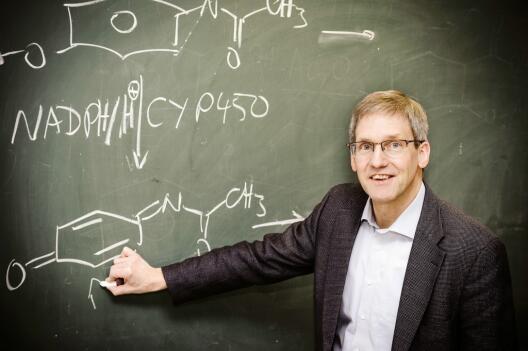ChemBion project description
Project 1
within Chembion: Subtype selective NMDA receptor ligands
Introduction: The NMDA receptor belongs to the class of ionotropic glutamate receptors and is involved in a plethora of important physiological (learning, memory) and pathophysiological (excitotoxicity, stroke, alcohol withdrawal symptoms) processes in the central nervous system (CNS) of mammals. Moreover, it has been found in peripheral tissues, e.g. the pancreas. Seven genes encoding for proteins (GluN1, GluN2A-D, GluN3A-B), which are able to form the heterotetrameric ligand-gated cation channel; have been identified. At least 8 splice variants have been identified for the gene encoding the GluN1 subunit. Usually, the NMDA receptor is assembled by dimerization of two dimers consisting of one GluN1 splice variant and one GluN2 or GluN3 subunit, resulting in a huge number of possible combinations. Recently, X-ray crystal and Cryo-EM structures of NMDA receptor parts and complete NMDA receptors with defined di- and triheteromeric subunit compositions have been reported.
Projects: The goal of this project is the better understanding of the mechanisms causing activation and inhibition of NMDA receptor subtypes containing different GluN2 subunits and GluN1 splice variants. The involvement of a particular NMDA receptor subtype in pathophysiological processes will be investigated. For this purpose, selective ligands for NMDA receptors containing GluN2A, GluN2B, GluN2C and GluN2D subunits will be developed and used for blocking or opening the channel pore as well as imaging.
Project 2
within Chembion: The action of prostaglandins on CatSper Ca2+ channels in human sperm
Introduction: The intracellular Ca2+ concentration coordinates several sperm functions required for fertilization. In particular, Ca2+ controls the beat of the flagellum and, thereby, the swimming behavior. In mammalian sperm, the Ca2+ concentration is controlled by the sperm-specific CatSper Ca2+ channel. CatSper is activated by low nanomolar concentrations of prostaglandins (e.g. PGE1) that are released by the oviductal epithelium and cells surrounding the oocyte. Prostaglandin-induced Ca2+ influx via CatSper affects sperm motility, which might facilitate the fertilization process. The mechanism of CatSper activation by prostaglandins is distinctively different from classical prostaglandin action in somatic cells. It does not rely on a metabotropic pathway involving G protein-coupled receptors and second messengers.4 In sperm, prostaglandins rather act via an ionotropic mechanism by binding to a subunit of the CatSper-channel complex or to a so far unknown protein associated with the channel complex.
Projects: We will develop and apply a chemical toolkit to elucidate the prostaglandin-binding site in human sperm and to characterize prostaglandin-evoked motility responses. We want to identify the binding site(s) for prostaglandins in human sperm by novel photo-affinity labelling tools and mass spectrometry. Moreover, we want to study the swimming path of sperm, while navigating in a light-sculptured two-dimensional prostaglandin gradient using optochemistry. The project(s) will be conducted as a whole (from the synthesis to the application) by a PhD student under co-supervision of B. Wünsch and T. Strünker.


